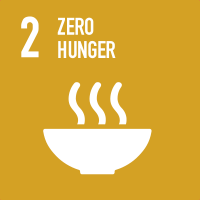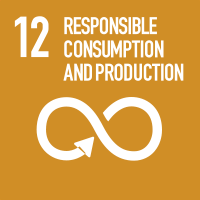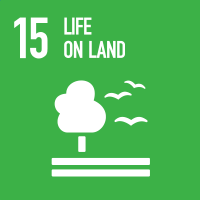Studying at the University of Verona
Here you can find information on the organisational aspects of the Programme, lecture timetables, learning activities and useful contact details for your time at the University, from enrolment to graduation.
Study Plan
This information is intended exclusively for students already enrolled in this course.If you are a new student interested in enrolling, you can find information about the course of study on the course page:
Laurea magistrale in Biotecnologie per le biorisorse e lo sviluppo ecosostenibile - Enrollment from 2025/2026The Study Plan includes all modules, teaching and learning activities that each student will need to undertake during their time at the University.
Please select your Study Plan based on your enrollment year.
1° Year
| Modules | Credits | TAF | SSD |
|---|
1 module among the following1 module among the following1 module between the following1 module among the following1 module between the following2° Year activated in the A.Y. 2024/2025
| Modules | Credits | TAF | SSD |
|---|
1 module between the following1 module between the following1 module among the following| Modules | Credits | TAF | SSD |
|---|
1 module among the following1 module among the following1 module between the following1 module among the following1 module between the following| Modules | Credits | TAF | SSD |
|---|
1 module between the following1 module between the following1 module among the following| Modules | Credits | TAF | SSD |
|---|
1 module among the followingLegend | Type of training activity (TTA)
TAF (Type of Educational Activity) All courses and activities are classified into different types of educational activities, indicated by a letter.
Genomics and metagenomics for bioresources (2023/2024)
Teaching code
4S008291
Teacher
Coordinator
Credits
6
Language
Italian
Scientific Disciplinary Sector (SSD)
BIO/18 - GENETICS
Period
Semester 1 dal Oct 2, 2023 al Jan 26, 2024.
Courses Single
Authorized with reserve
Learning objectives
The opportunity to analyze and reconstruct genomes with high processivity and accuracy, even within bioprocesses, allows to exploit genomic data as an irreplaceable source of information for the identification of functional characteristics of biotechnological interest. The course aims to provide knowledge on the structure and function of eukaryotic, prokaryotic and viral genomes, with particular emphasis on organisms of interest for bio-transformations. The course will focus on methods for genome analysis, which include sequencing, mapping, assembly and gene annotation. Metagenomic approaches that exploit second and third generation sequencing will be explored, with a particular focus on those aimed at characterizing the composition of microorganisms in natural environments and bioprocesses (natural or induced). Finally, representative examples of microbiome characterization in different environments will be analyzed.
Prerequisites and basic notions
Basic knowledge of molecular biology and genetics.
Program
Part 1. STRUCTURAL CHARACTERIZATION OF GENOMES
A) The anatomy of genomes
- Structural and genetic organization of prokaryotic genomes and eukaryotic organelles
- Structural and genetic organization of eukaryotic genomes
- Coding and non-coding genes
- Repeated elements
- Pseudogenes
- Bacterial and plant pan-genome
B) Methods for the structural analysis of genomes
- First generation sequencing
- Second generation sequencing methods
- Third generation sequencing methods
- Methods for generating physical and genetic maps
- Introduction to molecular markers and to methods for their analysis
- Sequencing based on linked-reads
C) Approaches for the study and assembly of genomes
- de-novo Assembly:
- hierarchical approach
- shot-gun approach
- hybrid approach
- Comparative analysis:
- reference-based assembly
- re-sequencing
D) Genome Projects
Students will actively carry out the analysis, presentation and discussion of original articles related to genome sequencing projects of organisms that constitute bioresources.
Part 2. FUNCTIONAL CHARACTERIZATION OF GENOMES
A) The transcriptome
- Components of the transcriptome
- Classes and functions of long and small non-coding RNA
B) Methods for the analysis of transcriptome
- Transcriptome analysis by second-generation sequencing
- Transcriptome analysis by third generation sequencing
- Analysis of microRNAs (PCR-based methods and sequencing)
C) Annotation of genomes
- Ab initio gene prediction
- Annotation guided by experimental evidence
- Annotation based on synteny analysis
- Genomic browsers
- In-silico functional annotation
D) The epigenome
- DNA organization in the nucleus and chromatin structure
- Introduction to epigenetic markers (histone modifications and DNA methylation)
E) Methods for the analysis of the epigenome
- Chromatin conformation analysis
- Analysis of DNA-protein interaction
- Analysis of histone markers
- Methylation analysis
Part 3. METAGENOMICS
A) Methods for metagenomic analysis
- Sequence-based metagenomics vs functional metagenomics
- DNA barcodes and metabarcoding
- Metagenomics by Whole Genome Shot-gun sequencing
- Shot-gun metagenomics by HiC, linked-reads and long reads
- Meta-transcriptomics
B) Metagenomic projects
Students will actively analyze, present and discuss original articles related to metagenomic projects relevant for bioresources.
Part 4. EVOLUTION OF GENOMES
- The first genomes and evolution of complex genomes
- Mutations and DNA repair
- Gene duplication, gene families and gene conversion
- Chromosomal alterations and polyploidy
- Horizontal transfer to prokaryotes
Bibliography
Didactic methods
THE LESSONS WILL TAKE PLACE IN DUAL MODE ONLY WHEN NECESSARY (E.G. COVID-19, VISA delay, etc.).
ALL TEACHING MATERIALS AND (when necessary) LESSON RECORDINGS WILL BE AVAILABLE IN THE COURSE'S MOODLE PLATFORM.
Learning assessment procedures
The final exam includes the presentation of a scientific paper and a written exam (5 open questions) covering the course program. The written exam will last 1 hours.
It will be also possible to carry out the exam remotely in case of COVID-19. In this case, the article will be presented in a teleconference and the exame will be oral (via zoom). At this aim, please get in touch via email: marzia.rossato@univr.it
Evaluation criteria
Paper presentation: understanding of the research conducted and the methods applied. Clarity of presentation.
Open questions: Correctness, completeness, clarity and punctuality of the answer with respect to the question.
Criteria for the composition of the final grade
The final vote will result from the sum of votes assigned to the paper presentation (max 3 points) and the vote of written exam (maximum 3 points for each question). The total will be converted to 33 points and the final voting will be expressed in thirtieths.
Exam language
Italiano




